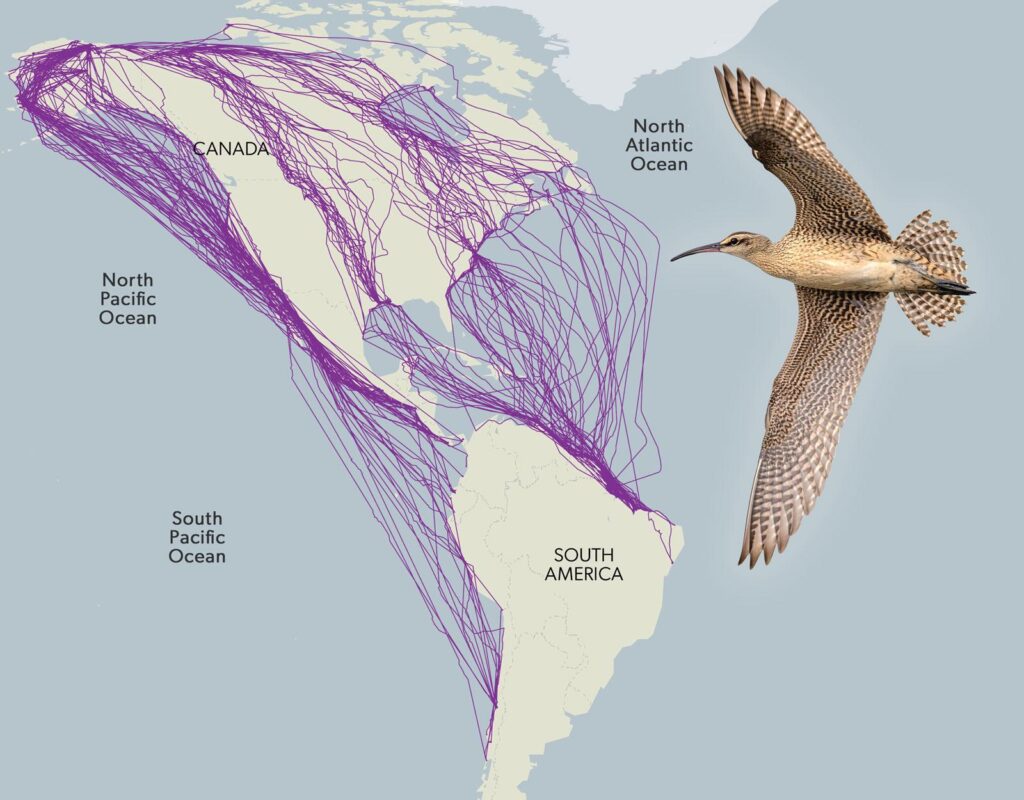A remarkable new study published in ESA Journals has shed light on a dramatic predator-prey encounter occurring far above the earth’s surface. Using cutting-edge high-resolution tracking technology, researchers have documented a migrating shorebird being killed by a raptor at an astonishing altitude of 3,000 meters. This unprecedented observation not only reveals the high-risk challenges faced by migratory birds in mid-flight but also provides fresh insights into avian behavior and predator dynamics at extreme heights. The findings offer a rare glimpse into the perilous journey of shorebirds and the complex interactions shaping their survival during migration.
Migrating Shorebird Falls Victim to Raptor Attack at Extreme Altitude
High-resolution tracking data from the latest ESA satellite mission has uncovered a rare and dramatic wildlife encounter at an altitude of nearly 3000 meters. During its annual migration, a shorebird became prey to an unexpected attacker – a raptor striking from the thin air above mountainous terrain. This unprecedented observation challenges previous assumptions about predation risks and the dynamics of avian interactions in extreme environments. The GPS-based tracking devices recorded a sudden acceleration, followed by erratic flight patterns, confirming the fatal ambush.
Key insights from the tracking data include:
- Altitude of attack: 2950 meters above ground level
- Duration of chase: approximately 3 minutes
- Speed of raptor strike: exceeding 80 km/h
- Environmental conditions: Clear sky, mild wind
| Parameter | Shorebird | Raptor |
|---|---|---|
| Wing Span | 45 cm | 110 cm |
| Flight Speed | 55 km/h | 80 km/h+ |
| Altitude Range | 0-3000 m | 0-3500 m |
| Hunting Strategy | Flocking migration | High-speed ambush |
High Resolution Tracking Sheds Light on Rare Predator-Prey Encounter Above 3000 Meters
Utilizing cutting-edge GPS and accelerometer technology, researchers have documented a remarkable predator-prey event taking place at altitudes exceeding 3000 meters-a rarity in avian behavioral studies. The detailed tracking devices recorded the intricate aerial pursuit of a migrating shorebird, ultimately intercepted and killed by a raptor. These high-resolution data not only capture the exact moment of predation but also provide unprecedented insights into the hunting strategies and flight dynamics employed in the thin mountain air.
Key findings from the study include:
- Predation occurring at altitudes where oxygen levels are significantly lower than at sea level
- Adaptive flight maneuvers by both predator and prey to combat thin air resistance
- Energy expenditure patterns revealing the physical demands of high-altitude hunting
| Parameter | Shorebird | Raptor |
|---|---|---|
| Flight Speed (km/h) | 45 | 60 |
| Altitude (m) | 3020 | 3050 |
| Energy Expenditure (kJ) | 350 | 480 |
Experts Call for Enhanced Monitoring to Protect High-Altitude Migratory Birds
Recent findings from high-resolution GPS tracking have shed new light on the perils faced by migrating shorebirds soaring at altitudes around 3,000 meters. In a groundbreaking study published by ESA Journals, researchers recorded a sharp predation event where a raptor successfully hunted a migrating shorebird mid-flight, challenging previous assumptions about safety at such extreme heights. This revelation has prompted ornithologists and conservationists to urgently advocate for improved aerial monitoring systems, ensuring a clearer understanding of predator-prey dynamics in these rarely observed high-altitude migration corridors.
Experts emphasize several key measures to enhance conservation efforts:
- Deployment of advanced bio-logging devices capable of simultaneous tracking and environmental data collection.
- Integration of radar and satellite technology to detect real-time flight interactions and threats.
- Establishment of international collaboration frameworks to monitor transboundary migratory routes.
| Species | Flight Altitude (m) | Recorded Predation Event |
|---|---|---|
| Bar-tailed Godwit | 3000 | Yes |
| Peregrine Falcon | 3300 | Predator |
In Retrospect
The startling encounter between a migrating shorebird and a raptor at an altitude of 3,000 meters sheds new light on the perils faced by avian travelers during their epic journeys. Thanks to cutting-edge high-resolution tracking technology detailed in the recent ESA Journals study, researchers have gained unprecedented insights into these rare and dramatic interactions in the skies. As conservationists continue to monitor and protect migratory species, such findings underscore the complex challenges birds endure, even in the thin air far above the ground.
